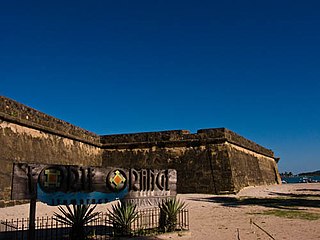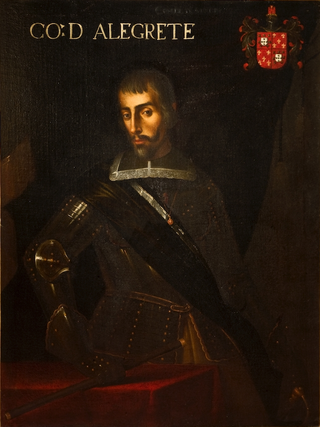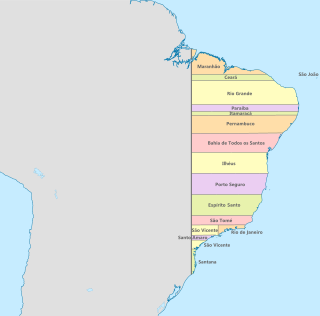
Recife is the fourth-largest urban area in Brazil with 4,054,866 inhabitants, the largest urban area of the North/Northeast Regions, and the capital and largest city of the state of Pernambuco in the northeast corner of South America. The city has more than a thousand shootings per year, making it one of the most violent in Brazil.The population of the city proper was 1,653,461 in 2020. Recife was founded in 1537, during the early Portuguese colonization of Brazil, as the main harbor of the Captaincy of Pernambuco, known for its large scale production of sugar cane. It was the former capital Mauritsstad of the 17th century colony of New Holland of Dutch Brazil, established by the Dutch West India Company. The city is located at the confluence of the Beberibe and Capibaribe rivers before they flow into the South Atlantic Ocean. It is a major port on the Atlantic. Its name is an allusion to the stone reefs that are present by the city's shores. The many rivers, small islands and over 50 bridges found in Recife city centre characterise its geography and led to the city being called the "Brazilian Venice". As of 2010, it is the capital city with the highest HDI in Northeast Brazil and second highest HDI in the entire North and Northeast Brazil.

Pernambuco is a state of Brazil, located in the Northeast region of the country. With an estimated population of 9 million people as of 2022, making it seventh-most populous state of Brazil and with around 98,067.877 km², being the 19th-largest in area among federative units of the country, it is the sixth-most densely populated with around 89 people per km². Its capital and largest city, Recife, is one of the most important economic and urban hubs in the country. Based on 2019 estimates, the Recife Metropolitan Region is seventh-most populous in the country, and the second-largest in northeastern Brazil. In 2015, the state had 4.4% of the national population and produced 2.8% of the national gross domestic product (GDP).

Ilha de Itamaracá is a tropical island and municipality in Pernambuco, Brazil on the Atlantic Ocean. Itamaracá means "stone shaker" in Tupi, from the words itá ("stone") and mbara'ká ("shaker"). It is separated from the mainland by the Canal de Santa Cruz, a salt water channel both mouths of which are on the Atlantic Ocean, and is connected to the mainland by a long road bridge.

Olinda is a historic city in Pernambuco, Brazil, in the Northeast Region. It is located on the country's northeastern Atlantic Ocean coast, in the Metropolitan Region of Recife, the state capital. It has a population of 393,115 people, covers 41.681 square kilometres (16.093 sq mi), and has a population density of 9,437 inhabitants per square kilometre (24,440/sq mi). It is noted as one of the best-preserved colonial cities in Brazil and has been inhabited since 1535.
The Praieira revolt, also known as the Beach rebellion, was a movement in the Pernambuco province of the Empire of Brazil that lasted from 1848 to 1849. The revolt, influenced by revolutions taking place in Europe, was due in part to unresolved conflicts left over from the Regency period and local resistance to the consolidation of the Empire of Brazil that had been proclaimed in 1822. The movement was led by radical elements of the Liberal Party of Pernambuco against the ruling Conservatives.

In Brazil, public holidays may be legislated at the federal, statewide and municipal levels. Most holidays are observed nationwide.

The Second Battle of Guararapes was the second and decisive battle in a conflict called the Insurrection of Pernambuco, between Dutch and Portuguese forces in February 1649 at Jaboatão dos Guararapes in Pernambuco. The defeat convinced the Dutch "that the Portuguese were formidable opponents, something which they had hitherto refused to concede." The Dutch still retained a presence in Brazil until 1654 and a treaty was signed in 1661.

Igarassu is a city in the Brazilian state of Pernambuco. It is the second oldest city of the country and is situated on the north coast of the metropolitan region of Recife, approximately 32 kilometres (20 mi). It stands as one of the earliest European settlements in Brazil and is the site of the oldest church in the country, the Church of Saints Cosme and Damião, built in 1535. Igarassu is home to numerous colonial-period historic structures. The historic center of the city was designated a national monument by the National Institute of Historic and Artistic Heritage (IPHAN) in 1972.

Dutch Brazil, also known as New Holland, was a colony of the Dutch Republic in the northeastern portion of modern-day Brazil, controlled from 1630 to 1654 during Dutch colonization of the Americas. The main cities of the colony were the capital Mauritsstad, Frederikstadt, Nieuw Amsterdam (Natal), Saint Louis, São Cristóvão, Fort Schoonenborch (Fortaleza), Sirinhaém, and Olinda.

Jaboatão dos Guararapes is a city in the state of Pernambuco, Brazil. It is a part of the Recife metro area. The population was 706,867 according to the Brazilian Institute of Geography and Statistics (IBGE) in 2020, making it the second most-populous city in the state of Pernambuco and the 27th in Brazil, ahead of major Brazilian state capitals such as Cuiabá and Aracaju. The city is a very important industrial center, hosting companies like Unilever and Coca-Cola. It is bordered by Recife in the north, Cabo de Santo Agostinho on the south, and Mangue forests to the west in Moreno.

Matias de Albuquerque, Count of Alegrete was a Portuguese colonial administrator and soldier. He was nicknamed "Hero of Two Continents" for his performance, beginning in 1624, against the Dutch invaders of colonial Brazil and for his role, beginning in 1641, as a general in Portugal, fighting for king John IV during the Portuguese Restoration War, where he won the battle of Montijo over the Spaniards in 1644. For this victory he was rewarded the title of Count of Alegrete by the king.

Pedro de Araújo Lima, Marquis of Olinda was a politician and monarchist of the Empire of Brazil. His long political career spanned the reigns of John VI, Pedro I and Pedro II. He was also one of the founders of the Brazilian Conservative Party.

Bernardo Vieira de Melo was the first Governor of Rio Grande do Norte in the colony of Brazil.

The history of Pernambuco can be roughly divided into two periods: first, when the region was a colony of Portugal and, second, when it was a component of the nation of Brazil. Not to be overlooked, however, are the established indigenous peoples of the region, numerous revolts and short-lived independence movements, French incursions, and a Dutch occupation.

The April Revolt, or Abrilada in Brazil's history was an episode in 1832 in the then province of Pernambuco, which fits into the Regency Period, in the context of Cabanagem. After the abdication of D. Pedro I of Brazil and his return to Europe where he played a decisive role in the Portuguese Civil War (1828–1834), the movement in Pernambuco, a conservative and absolutist, aimed at the renewal of D. Pedro I to the throne.

The Captaincy of Pernambuco or New Lusitania was a hereditary land grant and administrative subdivision of northern Portuguese Brazil during the colonial period from the early sixteenth century until Brazilian independence. At the time of the Independence of Brazil, it became a province of United Kingdom of Portugal, Brazil and the Algarves. Captaincies were originally horizontal tracts of land (generally) 50 leagues wide extending from the Atlantic Ocean to the Tordesillas meridian.
The following is a timeline of the history of the city of Recife, Pernambuco state, Brazil.

D. Manuel Álvares da Costa, also known as Manuel Álvares da Costa Claumann, was the 5th Bishop of the Diocese of Olinda, in Pernambuco, from 1706 to 1721, and 19th Bishop of the Diocese of Angra, from 1721 to 1733. He governed Pernambuco during the Mascate War.
The politics of Pernambuco is the direction of Pernambuco's territory and the determination of the powers that make up its government structure. It is governed by three branches, the executive, the legislative, and the judiciary, and its current constitution was enacted on October 5, 1989; the first constitution was enacted in 1891 and after that there were three others.

















